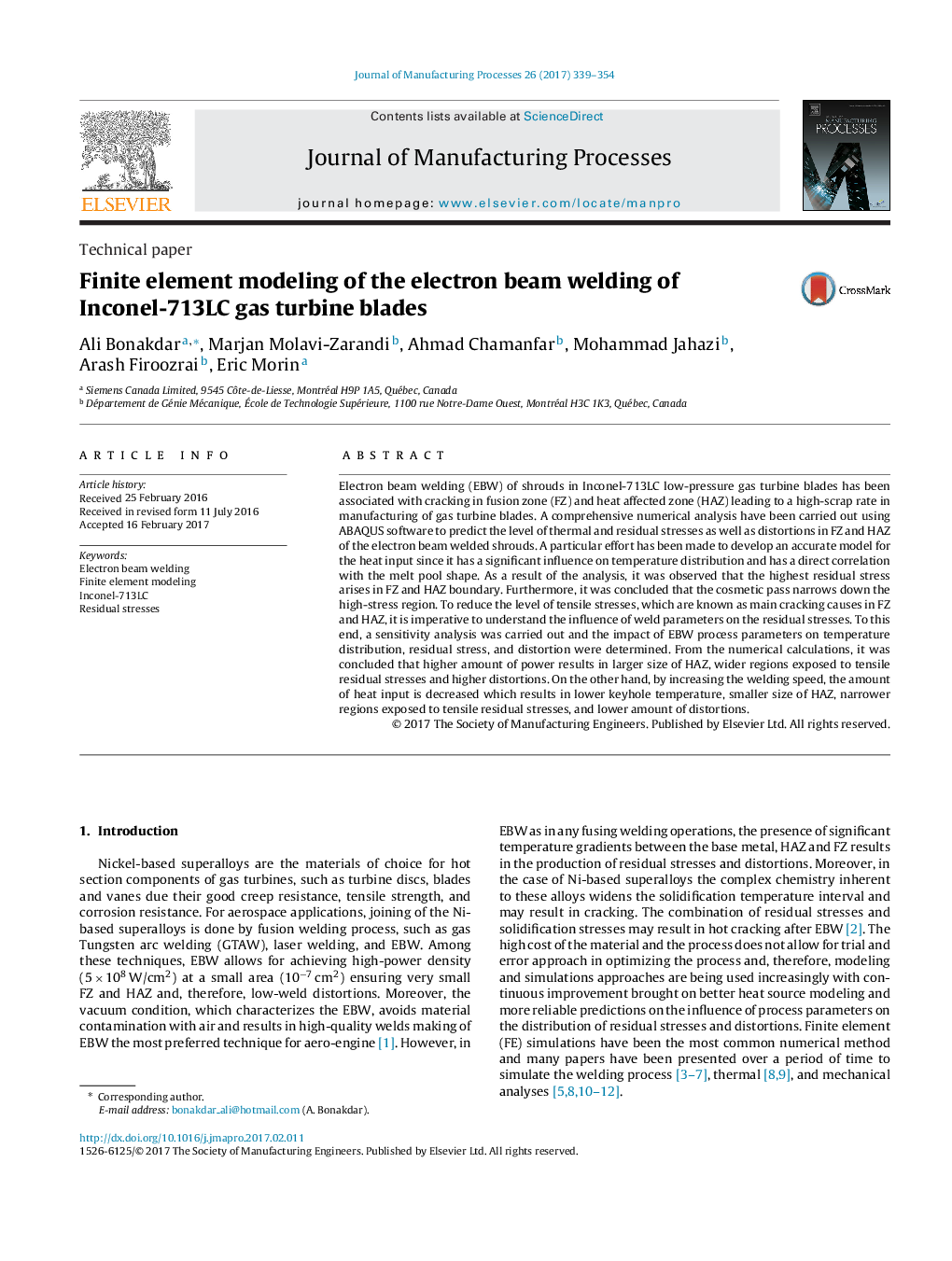| Article ID | Journal | Published Year | Pages | File Type |
|---|---|---|---|---|
| 5469299 | Journal of Manufacturing Processes | 2017 | 16 Pages |
Abstract
Electron beam welding (EBW) of shrouds in Inconel-713LC low-pressure gas turbine blades has been associated with cracking in fusion zone (FZ) and heat affected zone (HAZ) leading to a high-scrap rate in manufacturing of gas turbine blades. A comprehensive numerical analysis have been carried out using ABAQUS software to predict the level of thermal and residual stresses as well as distortions in FZ and HAZ of the electron beam welded shrouds. A particular effort has been made to develop an accurate model for the heat input since it has a significant influence on temperature distribution and has a direct correlation with the melt pool shape. As a result of the analysis, it was observed that the highest residual stress arises in FZ and HAZ boundary. Furthermore, it was concluded that the cosmetic pass narrows down the high-stress region. To reduce the level of tensile stresses, which are known as main cracking causes in FZ and HAZ, it is imperative to understand the influence of weld parameters on the residual stresses. To this end, a sensitivity analysis was carried out and the impact of EBW process parameters on temperature distribution, residual stress, and distortion were determined. From the numerical calculations, it was concluded that higher amount of power results in larger size of HAZ, wider regions exposed to tensile residual stresses and higher distortions. On the other hand, by increasing the welding speed, the amount of heat input is decreased which results in lower keyhole temperature, smaller size of HAZ, narrower regions exposed to tensile residual stresses, and lower amount of distortions.
Related Topics
Physical Sciences and Engineering
Engineering
Industrial and Manufacturing Engineering
Authors
Ali Bonakdar, Marjan Molavi-Zarandi, Ahmad Chamanfar, Mohammad Jahazi, Arash Firoozrai, Eric Morin,
